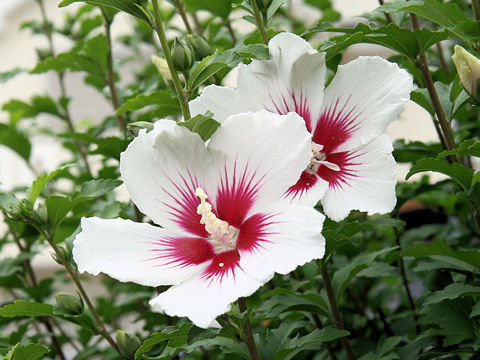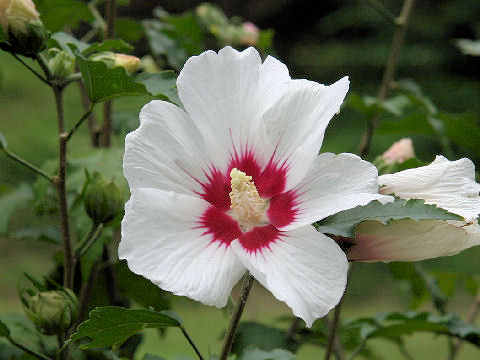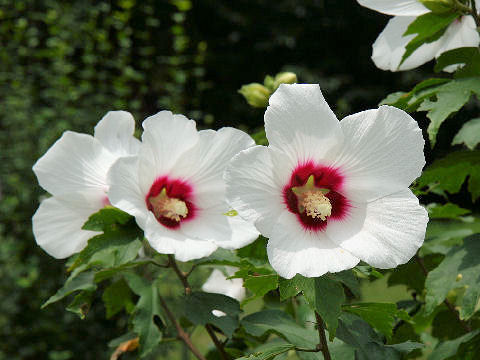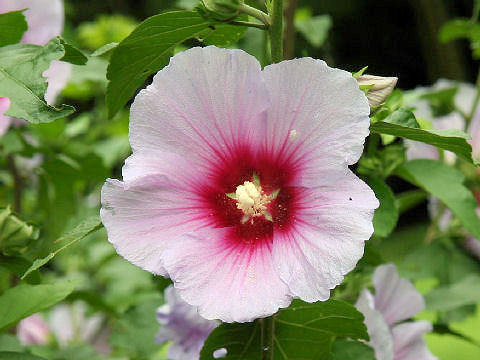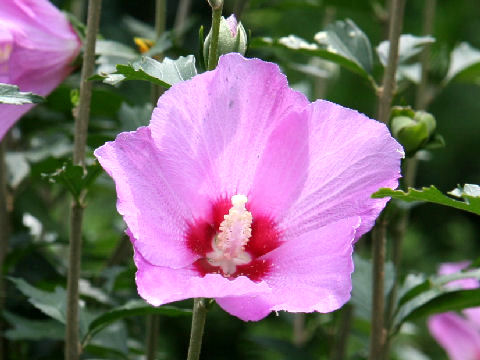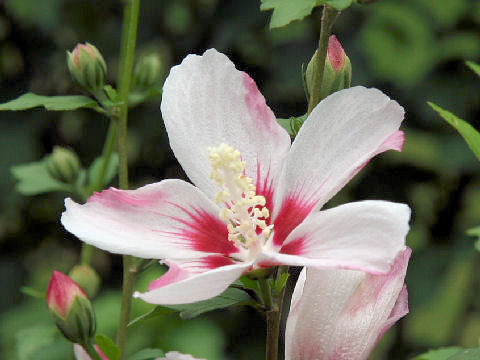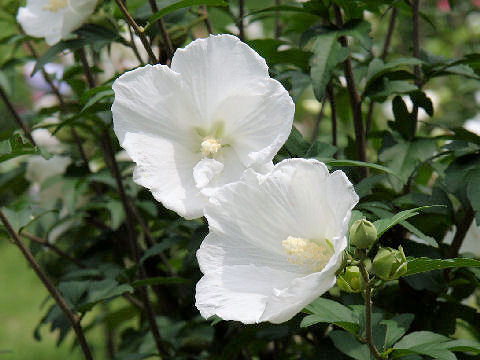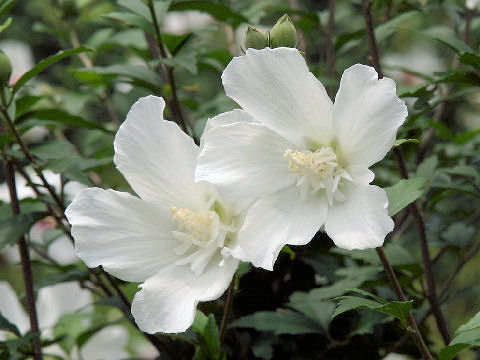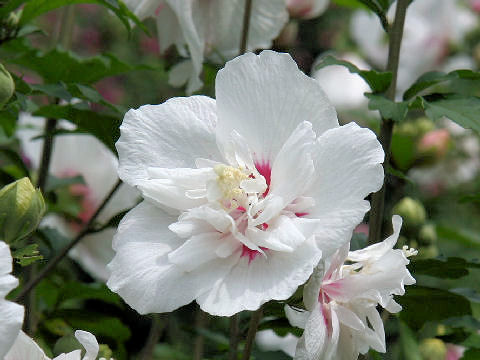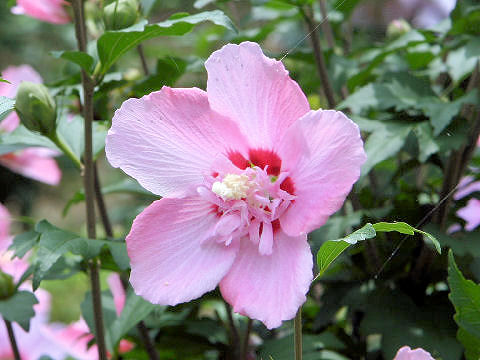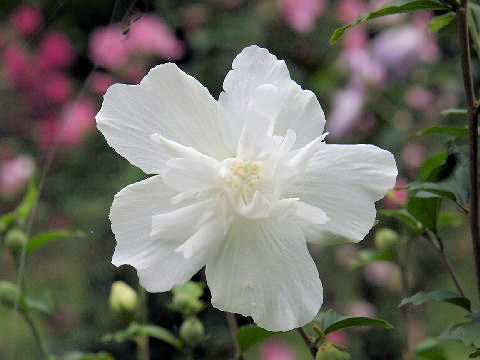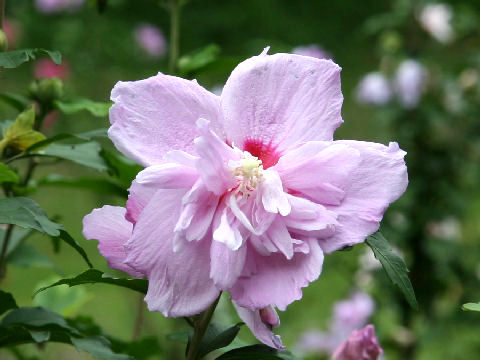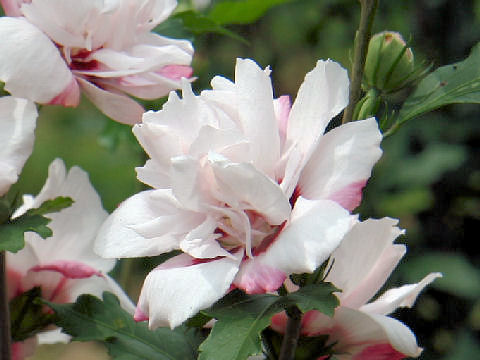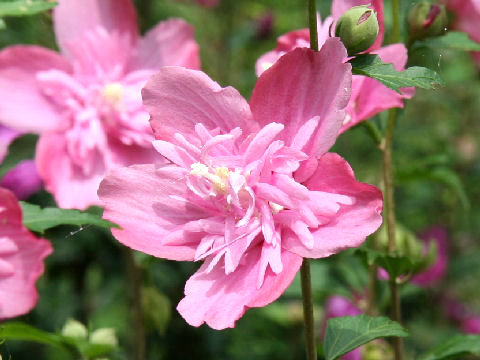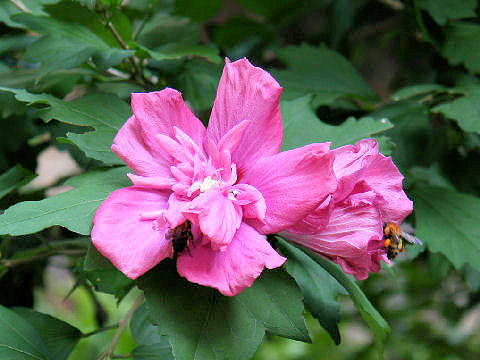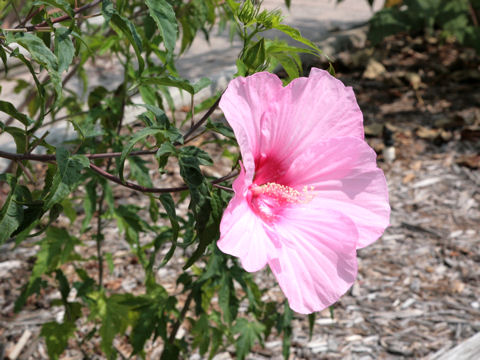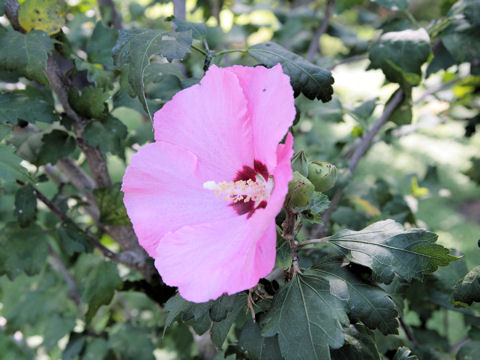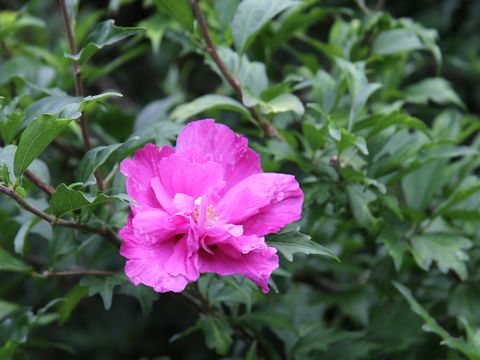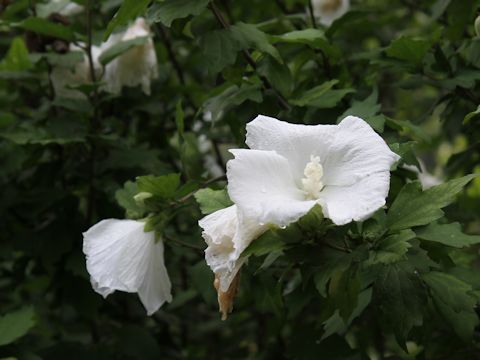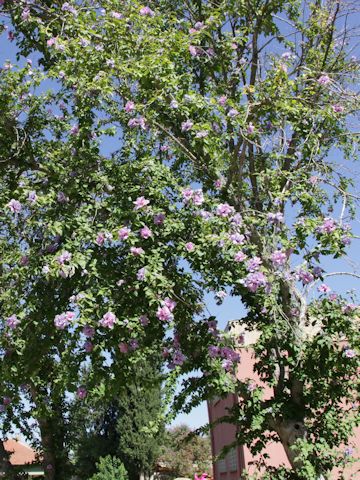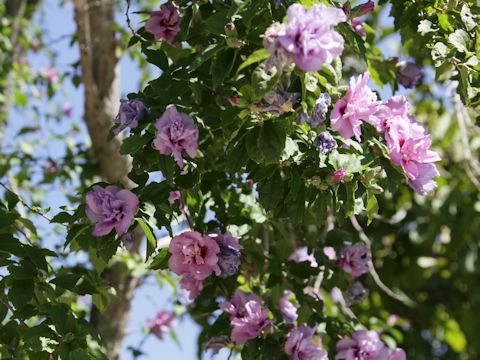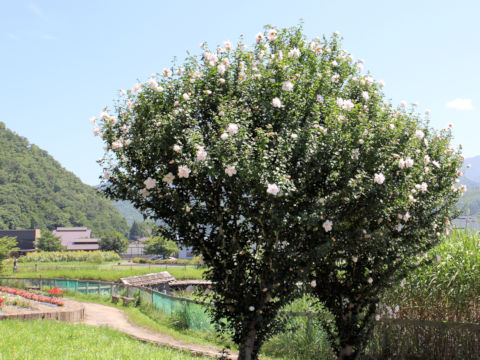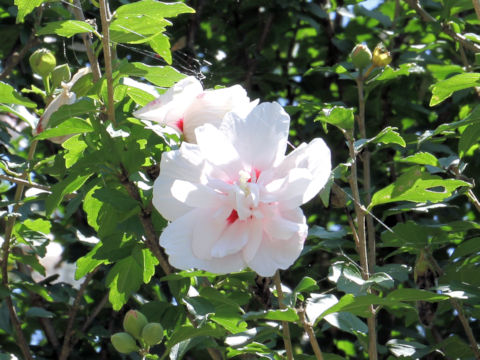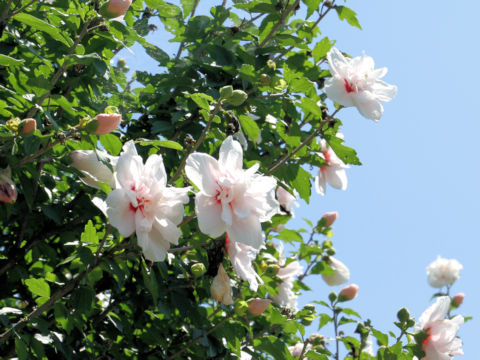
|
|
|
|
−− もっと見る(Show more)−−
−− 閉じる(Close) −−
|
|
|
|
中国やインドが原産です。今ではわが国をはじめ世界各地で広く栽培されています。幹は直立し、高さは3〜4メートルほどになります。5月から10月ごろ、淡い紅紫色の花を咲かせます。園芸品種も多く、白色や八重咲きなどもあります。一重は2〜3日、八重は2週間くらい咲き続けます。中国語では「木槿(mu jin)」です。古い時代に朝鮮半島に伝わり「無窮花(ムグンファ)」と呼ばれています。今では韓国の国花となっています。「朝鮮」の語源は、朝に鮮やかに咲く「むくげ」の花だという説もあります。 |
|
|
アオイ科フヨウ属の落葉低木で、学名は Hibiscus syriacus。英名は Rose of Sharon。 |
|
|
The Rose of Sharon (Hibiscus syriacus) belongs to Malvaceae (the Mallow family). It is a small deciduous tree that is native to China and India. This tree is cultivated to all over Japan and worldwide nowadays. The stem is erect and can reach 3-4 m in height. The pale magenta flowers come from May to October. There are many cultivars with various flower colors and forms. The single blossoms bloom for a few days and double ones carry on bloom for about two weeks. In Chinese, it is "木槿" (mu jin). It was introduced to the Korean peninsula in ancient times and is called "무궁화" (Mugunghwa). It is now the national flower of Korea. Some people believe that the word "朝鮮" (Chosun) comes from the "Mugunghwa" flower, which blooms brightly in the morning. |
|
|
[上] 大阪府四條畷市清滝中町にて、2007年07月04日撮影。 [中1〜中13] 大阪府交野市「大阪市大付属植物園」にて、2006年07月22日撮影。 [中14] 長野県白馬村北城「和田野の森」にて、2006年08月25日撮影。 [中15・中16] アメリカ・テキサス州「フォートワース植物園」にて、2007年09月16日撮影。(photo by Jon Suehiro) [中17・中18] 静岡県熱海市「アカオハーブ&ローズガーデン」にて、2013年08月02撮影。 [中19・中20] トルコ・アフロディシアス遺跡にて、2014年09月20日撮影。(photo by Jon Suehiro) [中21〜22・下] 山形県高畠町「まほろば古の里歴史公園」にて、2020年08月11日撮影。 |

|
|
Shu Suehiro |
